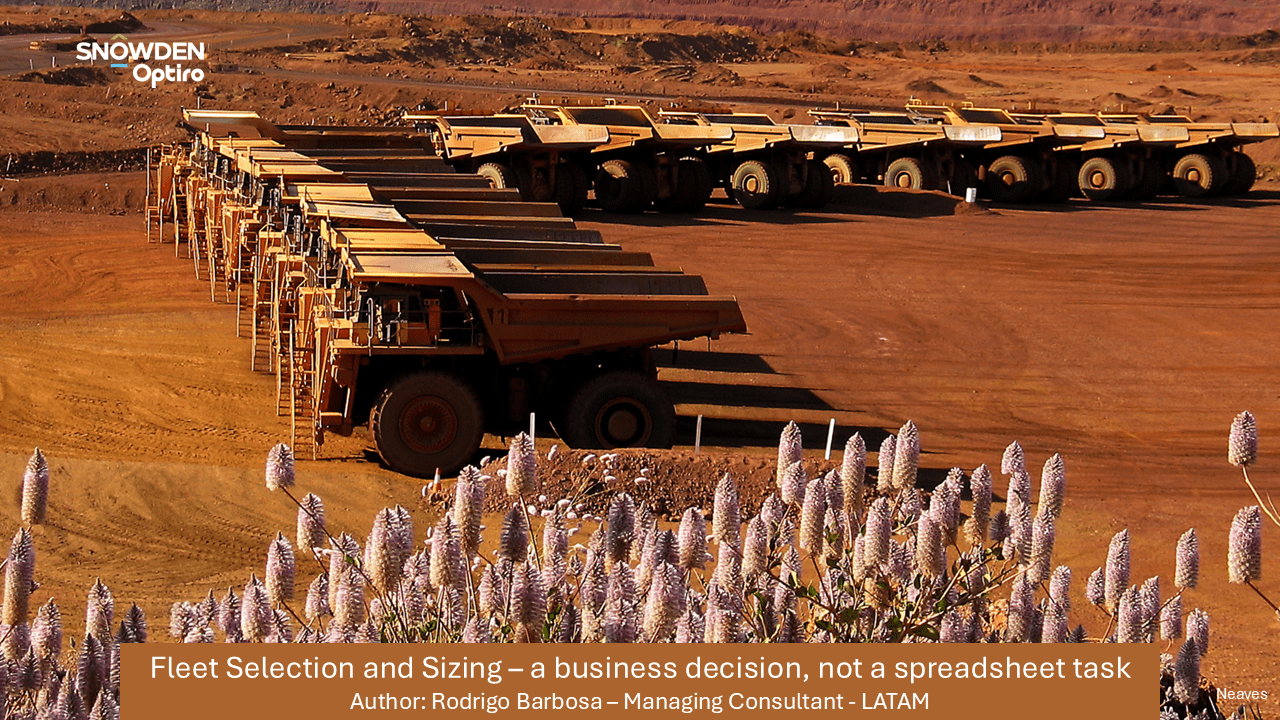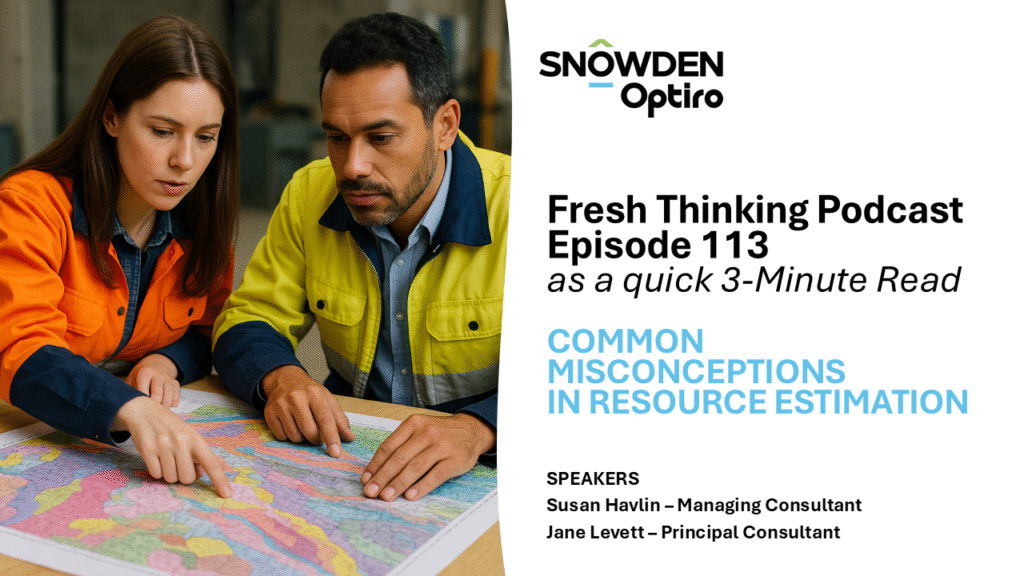


Here’s your 3-minute quick read of Fresh Thinking by Snowden Optiro’s podcast Episode 113.
We’ve pulled out the key insights and takeaways – perfect for when you want the value, minus the headphones.
In Episode 113 of Fresh Thinking by Snowden Optiro, Managing Consultant Susan Havlin sits down with Principal Consultant Jane Levett to discuss some of the most common misconceptions in mineral resource estimation – and why they’re worth revisiting.
Whether you’re early in your career or a seasoned geologist needing a refresher, this episode delivers some no-nonsense insights from real-world experience.
Jane doesn’t mince words: you can’t skip domaining. While geostatistics are crucial, they only work properly if your domains make geological sense.
A grade shell (say, everything above 0.5 g/t gold) might give you a starting point, but that’s not enough. Solid domaining comes from understanding lithology, structure, and mineralisation controls — and testing those domains with geostats to see if they hold up.
If the stats don’t support the domains? You may need to revisit your interpretation.
“If you don’t understand your geology and mineralisation controls, the validity of your estimation is in question.”
Another myth? That a single bulk density or specific gravity value per domain will do. Jane is firm on this: it won’t.
Density data is just as important as grade data – because it directly affects your tonnage calculations. Too few samples and you risk overestimating your tonnes and, by extension, your metal.
Her rule? More is better. Different lithologies, weathering zones, mineralisation styles – all need to be covered. If you’re taking just one sample per hole, you’re likely under-sampling.
“People give us three or four density results and say ‘that’s enough.’ It’s not.”
And finally, Jane tackles the common question: “I’ve got tight drill spacing – why don’t I have measured classification?”
Her answer: classification is holistic. Drill hole spacing is part of the story – but only one part. You also need solid data quality, good geological and grade continuity, a reliable estimation process, and metrics that support confidence in the outcome.
Spacing alone won’t guarantee measured confidence if the rest isn’t up to scratch.
“It’s easy to measure drill hole spacing – but it can’t be your only classification input.”
🎧 Catch up on the full conversation on your favourite podcast platform – and stay tuned for more no-nonsense insights from the team.
Watch or listen to the full episode
Available now on YouTube, Spotify, Apple Podcasts, and all major platforms.
Stay tuned for more 3-minute articles from our Fresh Thinking 3-Minute Read series.
If you would like to contact either Susan or Jane: contact@snowdenoptiro.com
Here is a LINK to our Snowden Optiro YouTube channel.
Snowden Optiro is a resources consulting and advisory group that provides independent advice, consulting and training to mining and exploration companies, their advisors and investors.
We help mine developers to advance their projects, mining companies to improve their operations and their professionals, and investors to de-risk their investments by the provision of quality advice, training and software in the field of Mineral Resources and Mineral/Ore Reserves.
Subscribe here for our podcasts, technical articles and news
